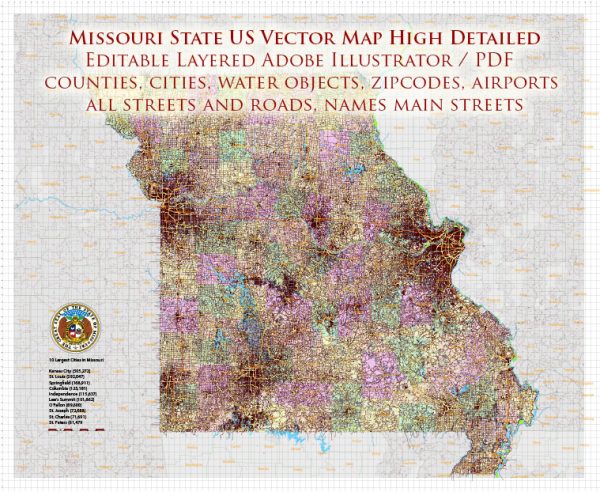The urban development history of Missouri State reflects the broader trends and challenges faced by many regions in the United States. Missouri’s urban areas have undergone significant changes, influenced by factors such as economic shifts, population growth, transportation advancements, and social changes. Here is a general overview of the historical development of urban areas in Missouri:
- Early Settlement and River Transportation (1700s-1800s):
- The state’s early urban development was closely tied to its geography, particularly its location along major rivers like the Mississippi and Missouri. Cities like St. Louis and Kansas City emerged as crucial river ports and trading centers during the 18th and 19th centuries.
- St. Louis, founded in 1764, played a key role in westward expansion and became a hub for fur trading and commerce.
- Railroad Expansion and Industrialization (Late 1800s):
- The late 19th century saw the expansion of railroads, connecting Missouri’s urban areas and facilitating the movement of goods and people.
- Industrialization became a significant force, with cities like St. Louis becoming centers for manufacturing and processing industries.
- Urbanization and Population Growth (Early to Mid-20th Century):
- The early to mid-20th century witnessed substantial population growth and urbanization, driven by factors such as industrial jobs and rural-to-urban migration.
- Suburbs began to develop, fueled by improved transportation infrastructure and a desire for residential areas outside of the city centers.
- Post-World War II Suburbanization (1940s-1960s):
- Like many other parts of the country, Missouri experienced a significant suburbanization trend after World War II. The construction of highways and the availability of affordable housing in the suburbs led to population shifts away from the urban cores.
- Economic Challenges and Urban Decline (Late 20th Century):
- In the latter half of the 20th century, cities like St. Louis faced economic challenges and population decline. Deindustrialization and changes in the global economy contributed to the deterioration of some urban areas.
- Urban Renewal and Revitalization Efforts (Late 20th Century to Present):
- In response to urban decline, cities implemented urban renewal projects and revitalization efforts. This involved initiatives to restore infrastructure, attract businesses, and improve the overall livability of urban spaces.
- Contemporary Urban Dynamics (21st Century):
- Missouri’s urban areas continue to evolve in response to economic, social, and technological changes. Cities are investing in sustainable development, cultural amenities, and technology hubs to attract a diverse population and promote economic growth.
It’s important to note that each city in Missouri has its unique history and development trajectory. Additionally, issues such as racial segregation, suburban sprawl, and economic disparities have shaped the urban landscape in complex ways, reflecting broader national trends.


 Author: Kirill Shrayber, Ph.D.
Author: Kirill Shrayber, Ph.D.